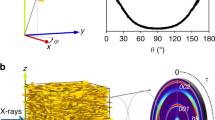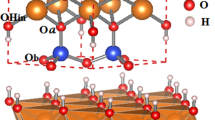Abstract
CLAY minerals having a lamellar structure commonly show a particular type of random stacking, in which only a limited number of definite interlayer spacings exist, but these are distributed with various degrees of randomness. Examples are: mica of 10 A. spacing, with a certain proportion of 14 A. hydrated layers; glycerol-saturated montmorillonite (17.7 A.) in which a certain proportion of layers of lower glycerol content (14 A.) is present; partly dehydrated halloysite1 (mixture of 10.0 A. and 7.2 A. layers).
This is a preview of subscription content, access via your institution
Access options
Subscribe to this journal
Receive 51 print issues and online access
$199.00 per year
only $3.90 per issue
Buy this article
- Purchase on Springer Link
- Instant access to full article PDF
Prices may be subject to local taxes which are calculated during checkout
Similar content being viewed by others
References
Brindley, G. W., and Goodyear, J., Min. Mag., 28, 407 (1948).
Hendricks, S. B., and Teller, E., J. Chem. Phys., 10, 147 (1942).
Brown, G., and MacEwan, D. M. C., J. Soil Sci., 1, 239 (1949).
Méring, J., Acta Cryst., 2, 371 (1949).
James, R. W., “The Optical Principles of the Diffraction of X-Rays” (G. Bell and Sons, London, 1948).
Author information
Authors and Affiliations
Rights and permissions
About this article
Cite this article
MACEWAN, D. Randomly Stacked Layers in Clay Minerals. Nature 171, 616–617 (1953). https://doi.org/10.1038/171616a0
Issue Date:
DOI: https://doi.org/10.1038/171616a0
This article is cited by
-
Two-dimensional Fourier Transform Technique for analysing Random Structures
Nature (1961)
-
Fourier transform methods for studying scattering from lamellar systems
Kolloid-Zeitschrift (1956)
-
Advances in Methods of Studying Clays
Nature (1953)
Comments
By submitting a comment you agree to abide by our Terms and Community Guidelines. If you find something abusive or that does not comply with our terms or guidelines please flag it as inappropriate.



